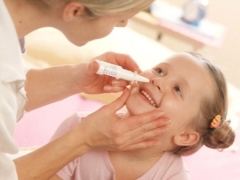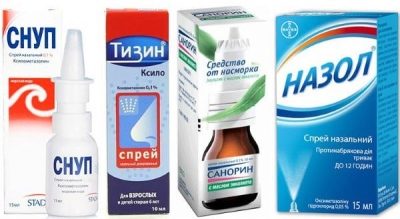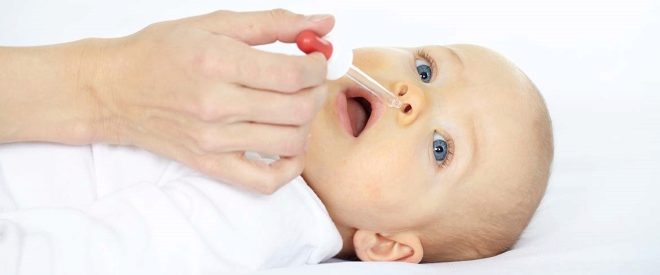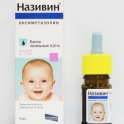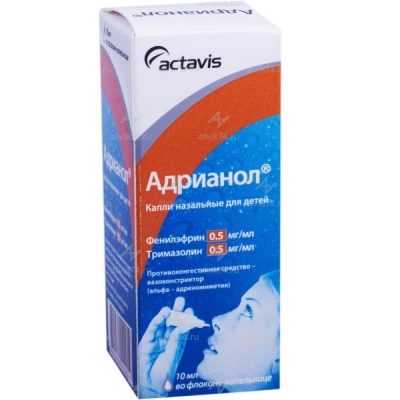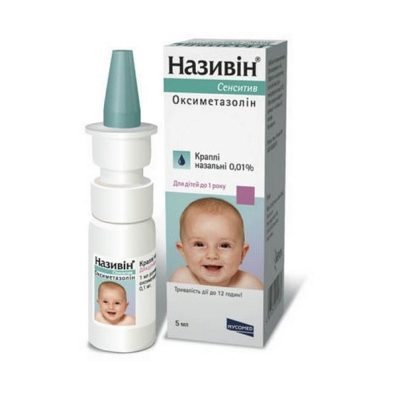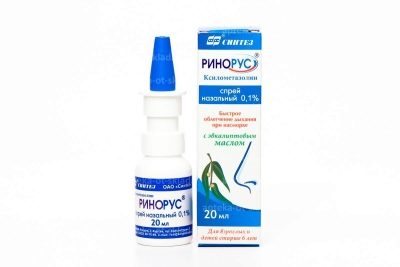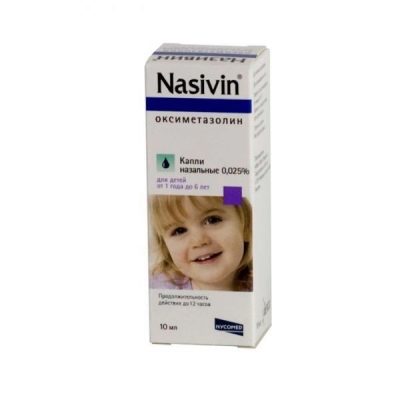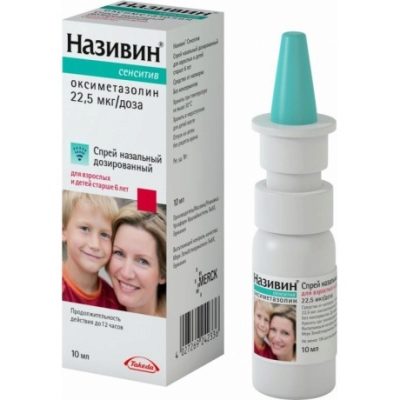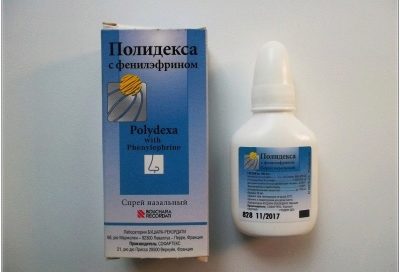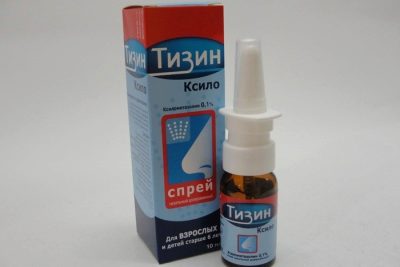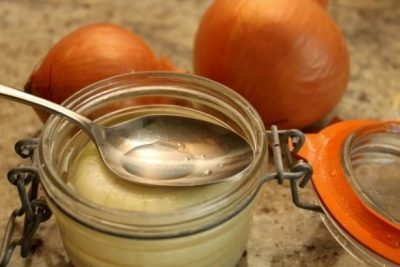Vasoconstrictor nose drops for children
Runny nose - perhaps the most common ailment. All ages are submissive to him. Large and small nose lays several times a year, and for some, this condition is generally chronic.
Reasons for rhinitis can be any number. This is a cold, and an allergic reaction to something (flowering, smoke, chemicals, dust, gas pollution), and a viral infection, penetration of pathogenic bacteria, fungi, violation of the microflora of the nasal mucosa.
Often, adults themselves resort to vasoconstrictor drops in the nose, and drip them to their children. The drugs really bring relief. But are they a real treat? Are they addictive? What more of them - harm or benefit?
How to navigate the variety of medicines that offer modern pharmacies, that from this range can be used to treat the common cold in children of different ages, so that these medicines are inexpensive, effective and safe? Let's try to answer all these questions.
How to act
The principle of action of vasoconstrictor drops in general terms is clear from the very name of the group of drugs. They make the vessels narrower, due to which the swelling decreases and the nasal congestion passes. How exactly does this happen?
Pharmacists call this drug the difficult word adrenomimetics because they affect alpha-adrenergic receptors, causing blood vessels to narrow. The lumens of the vessels of the nasal mucosa increase, a person is able to breathe, because the swelling no longer interferes.
These drugs begin to act almost immediately after entering the nasal cavity. The effect is observed after a few minutes.
The main thing that amateurs need to remember is often to use such medicines: vasoconstrictor nasal drops do not cure rhinitis, do not relieve allergies and rhinitis of fungal or bacterial origin, sinusitis and eustachitis. They only make breathing easier. Temporarily. The key word here is "temporary."
For general information, we invite you to look at the release of Doctor Komarovsky about the childhood rhinitis, causes and treatment.
Frequent and uncontrolled use of drugs is harmful to health, as drug addiction develops, drug addiction develops, and the rhinitis itself becomes intractable chronic form, atrophic rhinitis can develop. In some cases, the problem may become so neglected that surgery will be required. Without it, a person cannot breathe.
But such drugs have their own tangible advantages. They are considered relatively safe because they almost do not penetrate into the blood, and therefore do not act systemically, are limited to local action. This is correct only when the dosage is not disturbed. Otherwise, the vasoconstrictor will enter the bloodstream.
Kinds
All the drops that can increase the lumen of the vessels of the nasal mucosa are divided into three types, according to what the main active ingredient is in their composition:
- Based on naphazoline («Naphthyzinum», «Sanorin"). These funds are valid from 3 to 5 hours. By the standards of doctors, it is extremely small. Their children are prescribed less frequently, since their composition desiccates the delicate mucous membrane of the children's nose.
- Based on xylometazoline ("For carrying", "Rinonorm», «Galazolin" and etc.). These drugs last much longer — up to 8–9 hours; they do not have an aggressive effect on the mucous membrane, since many of them contain sea water as an aid.
- Based on oxymetazoline ("Nazivin", "Nazol", etc.). Such drugs can facilitate breathing for 10-13 hours. They found the most extensive use in pediatrics, because they are not toxic and harm is minimized.
Drops to children
Vasoconstrictor preparations for instillation should be used with extreme caution and prudence in the treatment of rhinitis in children. It is advisable to consult with a pediatrician, who will assess the condition of the baby, and make an informed decision about whether he needs vasoconstrictor drugs, or you can do with folk remedies.
In addition to easing breathing in case of nasal congestion or allergies, these medicines are often used before rhinoscopy to a child. They are used for otitis, adenoids. Also, drops of this drug group are prescribed to children suffering from frequent nosebleeds.
Many manufacturers offer to the main brand children's forms, with a reduced dosage of the active substance, as indicated in the name, for example, there is “Nazivin”, and there is “Nazivin Bebi”. But if you have been prescribed a medicine that does not have a special form of a child, then the doctor will individually reduce the adult recommended dosage, taking into account the age and health of the baby.
Indications for use
The use of vasoconstrictor drugs is appropriate for:
- Cold rhinitis;
- Sinusitis of all varieties;
- Allergic rhinitis;
- Otitis media;
- Preparing a child for surgery (for adenoids to be removed, for example).
Drug List
Choice by age
Kids up to a year
- «Adrianol» - a rather viscous thickish preparation that protects the delicate mucous membrane of the infant from drying out. With a cold child, you can drip these drops twice a day, 1 drop in each nostril. The procedure is best carried out before feeding for 15-20 minutes to avoid abundant regurgitation.
- «Xylen». The drug on the basis of xylometozolin acts quite gently, but effectively. According to pediatricians, "Xilen" rather quickly and permanently relieves nasal congestion, the parents' opinions about the drug are also mostly positive. From birth to six years, the drug is instilled 1-2 drops into each nostril 1 or 2 times a day. Drops and sprays "Xilen" refer to inexpensive drugs, which cost less than 100 rubles.
- "Nazivin Sensitive" - one of the varieties of the brand "Nazivin". The drug can be instilled no more than three times a day, 1 drop in the nasal passages. The course of treatment claimed by the manufacturers is not more than 5 days, but doctors do not advise babies to take this vasoconstrictive drug for more than three days before half a year.
From 1 to 3 years
- «Naphthyzinum». This drug acts quickly, but not for very long. In terms of cost, it is available to anyone. The price of "Naphthyzinum" in Russian pharmacies does not exceed 70 rubles.
It should be remembered that this drug belongs in the first group, which is based on the substance naphazoline, and therefore the drug must be used strictly as prescribed by the doctor. The average dosage is 1 drop twice a day, in each nasal passage. If you purchased “Naphthyzin” in the form of a spray, then sprinkle a child at the age of 1 year, 2 years, 3 years should be no more than once a day.
- «Renorus». These drops and spray with xylometazoline cannot be used in children under 2 years of age. The drug gently and quickly removes the swelling of the nasopharynx, facilitates breathing. Its composition contains eucalyptus oil, it has a pronounced anti-inflammatory effect. The effect of instillation and irrigation lasts about 10 hours.
The spray can only be used from the age of six; only drops are recommended for the age group we are considering. The standard dosage is one to two drops, no more than two times a day.
- «Sanorin». This drug based on naphazoline, should be dripped very carefully, because it can cause serious poisoning in case of overdose. The tool is used in the treatment of various rhinitis, including allergic, as well as with bacterial conjunctivitis as part of complex treatment.
"Sanorin" pharmacist in a pharmacy can offer you in the form of a solution and an emulsion. Only solution is suitable for children's use! The dose for a specified age is one drop in each nostril 2 or 3 times a day, depending on the severity of nasal congestion.
From 3 years old
- "Nazivin". The drug of the third group on the basis of oxymetazoline, the most preferred for the treatment of rhinitis in childhood. This is quite a strong and effective tool that comes in different forms.
- "Nazivin spray" can only be given to children from 6 years old, squirting into the nostrils once a day. Drops "Nazivin" can be used for children up to a year (“Nazivin Sensitive”), after a year (“Nazivin Baby”) and older children (simply “Nazivin”). The average dosage of 1-2 drops no more than three times a day.
- «Rinonorm». Drops and sprays of two different concentrations with a pronounced vasoconstrictor effect. The tool belongs to the second group of drugs, it is based Xylometazoline. Children under 2 years old do not use it, they are instilled with caution from 3 to 5 years in a dosage, no more than 1 dose (this is one pressing on the spray bottle cap) twice a day. Children under 10 years old can drip three times a day.
- «Polydex». Drops and spray with the same name are combined, with a pronounced vasoconstrictor effect. Manufacturers recommend them for the treatment of rhinitis in children from 3 years. The prescribed dose is 1 irrigation twice a day for a maximum of ten days. However, recent data in the field of pharmacology suggests that this drug is far from safe. It consists of neomycin, an antibiotic, the use of which in childhood can lead to hearing loss (sensorineural hearing loss). Therefore, be sure to consult your doctor before buying "Polydex".
- Drops "Tizin" exist in the form of solutions of different concentrations. Check with your child’s age. The least concentrated drops are shown to children from 2 years, others from 6 years. Ask the pharmacist to give you "Children's Tizin" (concentration 0.05%), it is instilled 2-3 drops in the nasal passage every 4 hours, but not more than 4 times a day.
Try to take the last dose of the drug for 3-4 hours before bedtime. Although it is believed that it is better to bury at night, consider that this drug often causes insomnia. To prevent this from happening to your child, consider this possibility.
- «Nazol Baby». It is a vasoconstrictor drug that acts quite strongly, but it will be safe if used and metered correctly. Requirements are described in detail in the instructions for use. A child of 3-4 years old can be buried in 1 drop in each nostril no more than every 6 hours and no more than 3-4 times a day. A child of 7-8 years old and older can increase the dose to 3-4 drops, but the multiplicity should be the same.
- "For carrying." The drug is available in the form of drops and spray. Differs in insignificant influence on a condition and integrity of mucous membranes of a children's nose. It can be used for any type of rhinitis and even with congestion in the ears against the background of rhinitis. The child will feel the first effect already in 2-3 minutes after instillation or irrigation.
Children from 6 years can enter 2 drops every 6-7 hours. Babies from three to six are prescribed a weaker solution, it is sold in any pharmacy. It is necessary to dig in according to the same scheme and in the same dosage.Doctors recommend spraying children from 5 years on two doses (two pressing on the piston) not more than three times a day.
- «Galazolin». This tool on the basis of xylometazoline in the form of children's drops is prescribed from 2 years of age from the age of three, you can use the nasal gel "Galazolin". It is administered in 1 dose in each nasal passage no more than twice a day. Adequate dosage of drops - no more than 2 drops in each nostril 1-2 times a day. The doctor in some situations may prescribe a triple dose of the drug, but this is done quite rarely.
Reception duration
When using vasoconstrictor drugs nasal, it is necessary to strictly follow the recommended treatment time. Violation of this rule can lead to negative consequences - the child will develop addiction and without drugs he will not be able to fully breathe through his nose, and over time, the drugs will no longer act.
Then parents will face a situation where some drops do not help, help with others, but not for long. It is necessary to change drugs frequently, and their list is not infinite. Probably, each of us personally knows at least one person who has a constant nose, he never leaves the house without taking a bottle of drops with him. If we do not want such a future for our children, let's observe the terms of reception.
The most popular drugs should be taken in accordance with the following "cheat sheet":
- «Naphthyzinum"- no more than 7 days;
- «Sanorin"- no more than three days, for teenagers from 14 years old - no more than a week;
- "For carrying" - 3-5 days;
- Otrivin - no more than 5 days;
- "Tizin" - 4-5 days;
- «Xylen"- 3-5 days;
- «Xymelin"- no more than one week;
- Glazolin - 10-14 days;
- «Renorus"- no more than a week;
- "Nazivin" - 3-5 days;
- "Nazol" - 3-5 days.
Side Effects and Overdose
Before you decide on the treatment of rhinitis in a child with vasoconstrictor drops, you should be clear about the possible consequences of such therapy. Unfortunately, the list of side effects of such medicines is quite large. A child may begin swelling of the nasal passages and sinuses, develop rapid and severe irritation of the mucous membranes, intolerable itching and burning, severe pain, tachycardia, nausea and vomiting. Often the use of such drops is accompanied by headache, sleep disturbance, increased anxiety. In rare cases, vision may be impaired.
These and other unpleasant consequences may occur not only in the case of individual intolerance, but also as a result of violation of the dosage recommended by the doctor and instructions for use. Another is a strong argument in order to consult a doctor. The ENT or pediatrician knows best which drug to choose in order not to harm the child.
Mode of application
Many parents think that there is nothing difficult. Took and dripped into the child's nose. In fact, the procedure must be carried out correctly so that the effect of the therapy is more rapid. What to do to drip nose drops? First you need to release the nasal passages from mucus, dry crusts, liquid secretions.
To do this, you can apply washing with a weak salt solution, furatsilina solution. If the child is already large, just ask him to blow his nose several times. If the child is still small and has not learned to do this, you can clean the nose from the inside with a special aspirator, available at any pharmacy, or with a cotton wool twisted tightly and moistened with furatsilin solution.
If you notice that the child’s mucosa is irritated, reddened, or too dry during cleaning, gently lubricate the nasal passages. petroleum jelly or sea buckthorn oil. Ordinary vegetable oil will do, if there is no other.
During the instillation of the drug, the child should neither stand nor sit. Put it, large - on a couch or sofa, small - on your knees, slightly lifting the head.Turn the child's head to the side and turn into that nostril that was higher in level. Gently massage the wing of the nose with your fingertips, make light tapping movements in the sinus area. Then turn your head to the other side and repeat the procedure with the second nostril.
After burying, the child should lie down for about 15 minutes in a calm state, after which he may be allowed to return to the game or classes.
General recommendations
- Do not bury vasoconstrictor drugs during pregnancy and during breastfeeding. In an “interesting” position, this is fraught with constriction of the vessels of the placenta, as a result of which the child will receive less oxygen and nutrients. When a young mother is breastfeeding, the active ingredient of the drug penetrates into breast milk and is easily passed to the baby. For future mothers and babies, folk remedies for the treatment of nasal congestion are preferable, there are quite a lot of them.
- If after 3-5 days of taking the drops there is no desired effect, you should not continue the course, you should not change drugs. Consult a doctor who will prepare for your child a special individual recipe for the so-called complex drops.
- There will be two, three or more drugs in their composition, they will be balanced in certain proportions. With the prescription you will need to contact any pharmacy in your city where there is a prescription department. The pharmacist in 10-15 minutes will prepare the necessary means. According to reviews of parents whose children often suffer from rhinitis, it is often the “difficult” drops that act most effectively.
- Do not leave the vial with a vasoconstrictor drug unattended. If a child uses drops inappropriately, such as drinking the contents, the consequences may be more than serious.
- Internal medicine can quickly constrict arteries and veins. The pressure rises sharply, the pupils constrict, the consciousness gets confused. Your baby may have a cardiac arrest. Even if only 5-7 ml of a vasoconstrictor has got into the children's body, it already needs emergency resuscitation care. Immediately call the ambulance.
- Most vasoconstrictor drops and sprays should not be taken simultaneously with tetracyclic antidepressants and MAO inhibitors.. The main property of the drops - narrowing of blood vessels, will increase at times, which can lead to symptoms characteristic of overdose and poisoning.
- Vasoconstrictor drugs can not be used to treat children with heart disease, glaucoma, diabetes, enhanced function of the thyroid gland.
Dr. Komarovsky about vasoconstrictor nose drops
The infantile physician Yevgeny Komarovsky, infinitely respected by all the mothers of Russia, does not recommend that children under 2 years of age should be instilled with vasoconstrictor drugs. He warns that these medicines are quite dangerous, and therefore advises, if possible, to replace them for kids with something softer in action. For example, some mucolytic agents, such as "ACC", dilute the secret not only in the bronchi, but also act on the nasal mucosa, and therefore facilitate the discharge of the contents of the nasal passages during a runny nose.
Antihistamines may also be helpful, as they constrict blood vessels. In any case, Yevgeny Komarovsky does not recommend choosing the method of treatment on his own. Better than a doctor, no one will do it. With each of his conversations with parents about the problem of the treatment of rhinitis, the famous pediatrician and TV host emphasizes that rhinitis is a non-tartar disease, it cannot be ignored and treated out of habit, a detailed search for the cause of the common cold and the right approach to therapy is required.
And now Dr. Komarovsky will tell us about vasoconstrictor drops for children.
Alternative
Traditional medicine knows many ways to treat runny nose in children without the use of serious medicines that can adversely affect the child's body. The most well-known remedy is onion juice, which is diluted with boiled cold water or saline and instilled into the nose up to 4 times a day.
From the cold well helps a weak solution propolis tincture. Often, mothers warm up the baby's nose with a boiled chicken egg, although this method is contraindicated if the baby has impurities in the nasal discharge. It is strictly forbidden to warm the sinuses with bacterial inflammation.
Parents use homemade nose drops that are made from beet juice or kalanchoe. They should also be diluted with saline.
Menthol oil, which many adults bury in the nose with a cold, for the treatment of children in the form of drops is not suitable. Such procedures are quite allergenic and can be harmful. But this wonderful tool is used as an impregnation for cotton turunds for children over 7 years old.
